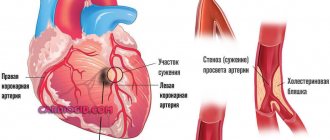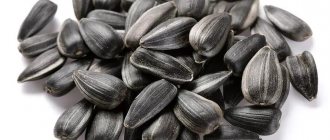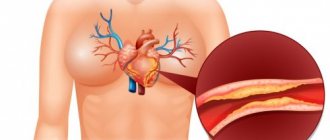For normal functioning, the human body needs to receive sufficient quantities of proteins, fats, carbohydrates, vitamins and minerals. An unhealthy lifestyle, poor nutrition, the presence of diseases, age after 50 years and other factors can lead to an increase or decrease in the amounts of these compounds. For example, an increase in LDL increases the risk of atherosclerosis and can cause heart attacks, and high sugar levels can trigger the development of diabetes.
Let's look at the normal levels of cholesterol and blood sugar by age in women and men, as well as what methods exist to reduce and control these indicators.
The role of cholesterol and sugar in the body
Sugar, or glucose, is a simple carbohydrate that enters the body with food, and, absorbed through the walls of the stomach and intestines, enters the vascular bed, through which it is delivered to peripheral cells. When complex glucose particles are broken down into simpler ones, adenosine triphosphate, or ATP, is formed, which is the main source of energy in the body. Measuring sugar is necessary both for people with diabetes and for every healthy person during annual medical examinations.
Cholesterol in the blood is no less important than sugar and performs a number of necessary functions, although it is generally considered a harmful substance. First of all, cholesterol takes part in the metabolism of fats, digestion and breakdown of food, and is necessary for the body to produce salts and gastric juice. Cholesterol is necessary to maintain the production of female and male sex hormones, and therefore to maintain the function of the entire reproductive system.
High cholesterol - causes, consequences
The concentration of cholesterol reflects the state of fat metabolism, production, and utilization of cholesterol-containing hormones (hormones of the adrenal glands, gonads). An increase in its level develops under the influence of such provoking causal factors:
- Hereditary genetic predisposition.
- Sedentary lifestyle.
- Tendency to be overweight or a significant increase in a person’s body weight (obesity).
- Presence of bad habits (smoking or systematic drinking of alcohol).
- Preference for eating fatty, fried foods, pickles, and spices.
- Passion for refined carbohydrates (sweets, confectionery).
A prolonged increase in cholesterol leads to its gradual deposition in the inner wall of arterial vessels with a narrowing of their lumen. This significantly impairs the blood supply to the organs. Depending on the location of cholesterol atherosclerotic plaques, coronary heart disease, cerebral atherosclerosis (formation of plaques in the vessels of the brain), hypertension (the result of insufficient blood supply to the kidneys, which respond by producing substances that increase systemic blood pressure) can develop.
Glucose and cholesterol levels
The norm of sugar and cholesterol in the blood is a rather relative concept, since the level of these indicators depends on the gender, age of the patient, as well as on many additional factors. Studies have found that the norms for men and women are slightly different, although the upper and lower limits of the norm are almost identical. Specific numbers are given below. It also matters little where the blood sugar is taken from. Typically, the values in venous blood are slightly lower than in capillary blood (when blood is taken from a finger for testing).
Low blood glucose levels indicate a condition called hypoglycemia, and high levels indicate hyperglycemia. High blood sugar is not always a clear sign of diabetes. To make an accurate diagnosis, a special laboratory test called a glucose tolerance test is performed, during which blood is drawn from a vein three times. The first time is on an empty stomach, then you need to drink an aqueous solution of glucose, and after one and two hours the analysis is repeated.
Normally, sugar should be quickly absorbed by a healthy body, absorbed in peripheral tissues, and its amount should decrease over time. This type of examination only indicates the presence of diabetes if a high concentration of glucose is present in all three blood draws. If the result showed a normal fasting sugar level, which jumped sharply 2 hours after drinking an aqueous solution of glucose, this indicates impaired glucose tolerance . This is a pathological condition that is highly likely to progress to the development of diabetes.
Elevated cholesterol and blood sugar indicate metabolic disorders in the body. It is imperative to adjust the diet and identify the source of the disorder in order to prescribe adequate treatment.
The level of cholesterol in the body, like sugar, depends on a number of reasons, and is also cumulative in nature, which means it will definitely be higher with age. People under 30 rarely experience cases of high cholesterol, even if the person does not lead the healthiest lifestyle. This is partly due to rapid lipid metabolism in a still young body. To assess the patient's condition as accurately as possible, cholesterol results evaluate all three indicators, “good”, “bad” and total cholesterol, that is, HDL cholesterol, LDL and TC, as well as the ratio of the concentrations of high-density lipids and low-density lipids.
For type 2 diabetes, the optimal cholesterol level is up to 4 mmol/l
Functions of cholesterol
- Cholesterol is a building component of cell membranes, gives elasticity and strength to the membranes of all cells of the body;
- Lipids are responsible for the permeability of cell membranes and protect them from the influence of the external environment, increasing their immunity;
- Without enough cholesterol, the adrenal glands do not produce steroid-type hormones;
- Cholesterol converts sun energy into vitamin D with the help of liver cells;
- Cholesterol is involved in the production of bile acids;
- Provides communication between neuronal cells in the spinal cord and brain;
- Protect nerve fibers with a strong sheath;
- Protects the body from toxic elements entering it;
- Cholesterol helps the body resist infectious agents and invading viruses.
Measuring cholesterol and sugar levels
Blood sampling for sugar and cholesterol is carried out in the morning on an empty stomach. The day before, experts recommend refraining from eating fatty, spicy, fried and salty foods, as they can distort the results of the examination. You should also tell your doctor about the medications you are taking at the time of the test, as they may also affect the overall results. In addition, a strict diet, stress, and intense physical activity can blur the overall picture in the test results.
There is only one test that can be performed for high cholesterol and blood sugar - a biochemical blood test . To do this, blood is taken from a vein in a volume of 5 ml. Moreover, if you need to determine exactly the cholesterol level, only venous blood is used. If you need to determine your sugar level, you can simply donate blood from your finger . Quite often, experts recommend taking a joint test for glucose and cholesterol, this is especially true for patients with type 2 diabetes. This is due to dysfunction of insulin receptors, due to which insulin accumulates in the body and leads to an increase in cholesterol levels.
In addition to a biochemical analysis for cholesterol, you can also take a detailed analysis, or lipid profile. This analysis is more accurate and gives a detailed idea of the concentration and ratio of lipids in the body. To determine abnormalities in blood sugar, there is a simple glucometer device that can be easily used at home.
Prevention
- Nutritional adjustments to reduce blood glucose;
- Anti-cholesterol diet;
- Constant struggle with excess weight;
- Avoid nicotine and alcohol, and do not take any drugs;
- Constantly check your blood pressure and correct it with antihypertensive medications;
- Daily physical activity on the body;
- Engage in active sports;
- Avoid stress;
Systematically undergo preventive laboratory testing of blood sugar levels and cholesterol levels.
How to reduce indicators and maintain them normal
If the test result shows that cholesterol and blood sugar are elevated, you need to consult a doctor for detailed instructions and recommendations on how to reduce it in your specific case. However, there are a number of generally accepted recommendations for reducing glucose concentrations, as well as for strengthening blood vessels and clearing them of cholesterol.
- First of all, you should carefully monitor your diet and adhere to a diet . Doctors recommend eliminating or limiting as much as possible the consumption of large amounts of animal fat, sugar and sweet foods, foods rich in simple carbohydrates and salt. Proper nutrition is the basis for successful treatment of diabetes and cardiovascular diseases.
- Exercise is highly recommended . Regular physical activity will not only normalize cholesterol and sugar levels, but will also help you lose excess weight, which also has a positive effect on the concentration of these substances in the body.
- Give up bad habits. Studies have found that quitting smoking and drinking alcohol helps reduce cholesterol levels by 10-25%.
- your stress levels whenever possible .
- Sometimes, along with the advice already indicated, drug treatment, statins and diabetic medications . Stick to the treatment regimen prescribed by your doctor, do not cancel or change the dosage on your own, this can lead to serious consequences.
The best cure for blood cholesterol in the presence of diabetes is lifestyle changes (details). This is what will effectively help lower blood sugar and cholesterol. The only downside is that it's not fast. Or do you prefer pills?
Indications for biochemical blood tests
The study is carried out at the first stage of diagnosing any somatic diseases of any profile. It is mandatory to refer a patient for blood biochemistry in case of the following complaints and symptoms:
- Regular disruptions in digestion (nausea, vomiting, heaviness in the abdomen, bloating, flatulence, diarrhea or constipation, heartburn, discomfort in the hypochondrium);
- Sustained pain of any localization (headache, muscle, joint, in the area of internal organs);
- Respiratory disorders (persistent cough, shortness of breath, spasms);
- Signals from the nervous system (tremor of the limbs, chronic fatigue, insomnia, dizziness and fainting);
- Malfunctions of the genitourinary system (changes in the smell and color of urine, changes in the frequency of urination, discomfort during the process);
- Signals from the cardiovascular system (rapid or rare heartbeat, high or low blood pressure);
- Weakness of the immune system, which is expressed in frequent and long-lasting respiratory diseases;
- Pathological changes in the skin and the presence of visible tumors on the body;
- Signs of endocrine disorders (persistent thirst or hunger, sudden changes in weight, constant feeling of heat or cold).
What is the atherogenic index
The coefficient is used to assess the risk of heart attack, stroke and atherosclerosis itself. To calculate the indicator, use a special formula:
Total cholesterol is LDL divided by HDL.
Based on the results, you can get a certain number that reflects the probability of the pathological process. Endocrinology specialists are doing the decoding, but we can talk about approximately the same results.
- Reference values for young people are up to 2.8.
- In patients over 30 - up to 3.5.
- As for patients predisposed to changes in the body - up to 7.
Less is better. This is just such a case.
Complexes with this research
Biochemistry of blood.
19 indicators Advanced biochemical blood test 6,280 ₽ Composition Expanded hospital complex Expanded infectious screening for prevention and hospitalization 7,700 ₽ Composition
Check-up No. 1 for children and adolescents Annual preventive examination program RUB 10,950 Composition
IN OTHER COMPLEXES
- Biomarkers of liver functional capacity. Extended examination RUB 3,900
- Cola and chips 3,020 ₽
- Biochemistry of blood. 8 indicators 990 ₽
- Preventative check-up RUB 11,960
- Diabetes monitoring RUB 1,900
Who needs to measure glucose levels
Checking the level is necessary primarily for those who have been diagnosed with diabetes. Absolutely healthy people should also monitor their indicators. Medical examination is necessary when:
- Signs of hyperglycemia. They are manifested by fatigue, frequent urge to empty the bladder, a feeling of thirst, and weight changes.
- Being in a risk group. It includes people over forty years of age who have a genetic predisposition, are overweight, and have various stages of obesity.
- Pregnancy. Between 24 and 28 weeks, pregnant women may develop gestational diabetes mellitus.










